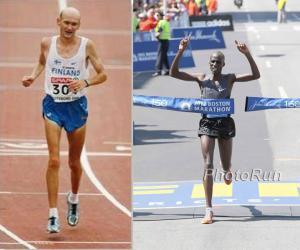
If you want to continue attaining good strength gains in the weight room and power on the mound, sometimes it’s not only what you do, it’s what not to do. Here’s one of those things… Running Poles!
Often times when I’m driving down the road and right before my eyes is a familiar sight. You know that stick figure running on the side of the baseball field from pole to pole. In this blog, I’d like to give you some facts and statistics in regards to distance running and how it correlates to performance on the baseball field. By the way, I consider anything over 150 yards (1 ½ football fields) long distance running.
-
- Speed limpers got their name due to weak, injury-laden bodies stemming from high impact activity (running for long durations at a time). The motion of pitching is rapid and explosive requiring great stability and mobility, much like a sprinter.
- Aerobic levels – 60-75% of MHR, (maximum heart rate) are the general zones used for weight loss. Studies have also shown it to be the zone that interferes with strength and conditioning gains due to decreased testosterone levels and elevated cortisol levels. Sprinting is done in a zone that is 85-95% of MHR which elevates testosterone levels and where there is a direct transfer over to the power output needed in a pitcher’s delivery.
- The jogging or running stride recruits mostly rectus femoris (quads), and uses very little psoas or glute activation due to the fact that the stride rarely reaches 90% or above (psoas) or full hip extension (glute). This lack of mobility in the hips directly affects a pitcher’s stride length which is a major player in the quest for velocity.
- Pitchers make up approximately 50% of all major leaguers but account for 70% of the space on the disabled list. Why crush such a “high risk” athlete with an activity that yields such a high risk of injury?
- It takes a player approximately 30 seconds to “run” a pole with a minute rest. Why would we apply such a protocol to a player that needs to be explosive for 2-5 seconds (a pitch) with approximately 20 seconds rest time between pitches?
Many pitchers comment that running makes them feel better the day after throwing, and that is very plausible. However, as I have outlined above pitchers need to consider the long term impact of running long distance. It doesn’t make them better at their craft. The benefit has to be worth the risk. Taking these factors into consideration, the only logical choice is sports specific energy system work, i.e. sprinting!
So if you’re getting paid to run marathons by all means run them. Other than that start sprinting!!!
